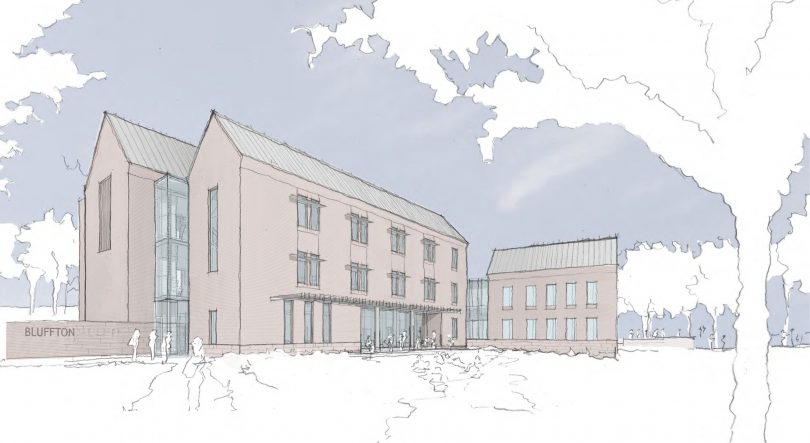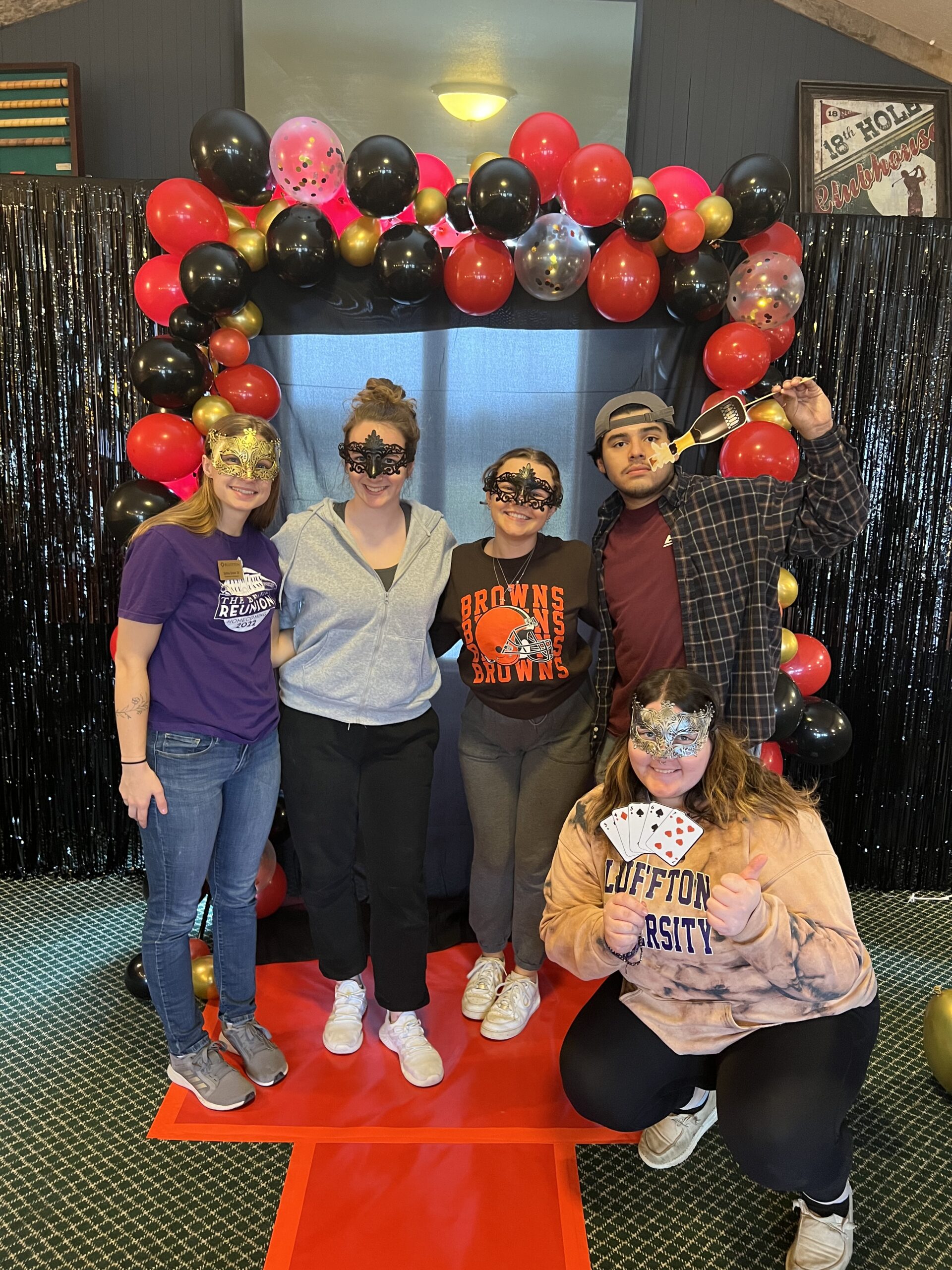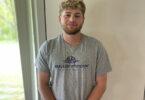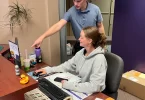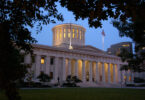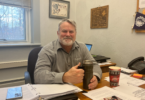An architect’s rendering of the new three-story, 32,000-square-foot science building planned to be constructed on the current site of Lincoln Hall. The view is from the building’s south lawn. Fundraising is underway for the new facility, which university administrators say will serve students in multiple disciplines.
By Autumn Young
In roughly the same time it takes to earn a bachelor’s degree, Bluffton plans to design and construct a three-story, 32,500-square-foot science building, completely funded by alumni and other private donors. Though the process is already underway with a goal of being completed by fall 2018, it is no small undertaking. The completion of this undertaking will provide an upgrade to the campus, revamp Bluffton’s science programming and place much needed learning tools in the hands of students and professors alike, administrators say.
Bluffton’s current science facility is less than conspicuous. Shoker Science Center lies mostly below the ground. Its 10,000 square feet, arching in the shape of a horseshoe, provide just enough space for faculty offices, multidiscipline labs and a small classroom.
“It’s enough to get by on, but a new facility could definitely improve education,” said Caleb Halfhill, a junior biology and chemistry major.
Others agree.
“Last year, we updated Bluffton’s facility Master Plan for the first time in 14 years and identified that Bluffton desperately needs a new science building,” said Dr. Hans Houshower, vice president for advancement at Bluffton, and administrator of the building project.
That realization led to almost immediate action. By November of last year, an architectural firm, SoL Harris/Day, was hired and a detailed concept design was in the works. By February of this year, the committee presented its core ideas to the board of trustees.
“The focus of this building is to design the kind of science labs we need for twenty-first century teaching and learning,” said Houshower. “We have great faculty in our science program, but they don’t have the resources to provide the kind of learning experience we want for our students.”
Science majors are not the only students project planners hope to reach, however. Broader goals include helping to make the science building open and inviting to bring science to the entire student body, in a way that is currently impossible.
“I like science, but I’ve never even been in Shoker—it’s not the most welcoming place in the world,” said Kayla Craig, a senior social work major.
The new building will have many innovations to make science more available to majors and non-majors alike, Houshower said. Large windows will look in on labs. First floor will have a 60-seat classroom with the flexibility to swivel the chairs for group work. Labs will be separated by discipline, with the option for interdisciplinary use, and will all include audio-visual tools so more teaching can take place in the lab and outside the classroom.
Deciding what to include in the building is no easy task, however, even for experienced architects like Matt Sutter.
“The biggest challenge, on any project, is that there is not enough money to build what is ideally desired by all the faculty, staff and administration,” said Sutter in a phone interview. “So getting everyone to agree and come up with innovative uses of space to make everyone happy, that’s the hard part.”
The planned location for the building is on top of where Lincoln Hall (an abandoned residence hall) now stands. That central location could result in some major changes for the university, including closing a portion of Rosenberger Drive to make a pedestrian friendly campus center. Berky Hall, current home of the food and nutrition department, would also be removed, and the department relocated in the new science building, joining the physics, math, chemistry and biology departments.
While science may be moving to a new location, Shoker won’t fall into disuse. Already multiple student groups have made suggestions for future repurposing. Ideas include: Student Life offices, a new home for Student Senate, a space for student activities, even a place for theatre. Whatever its future, it promises not to be completely forgotten as science moves onward and upward.

